What is the Wizard Archetype?
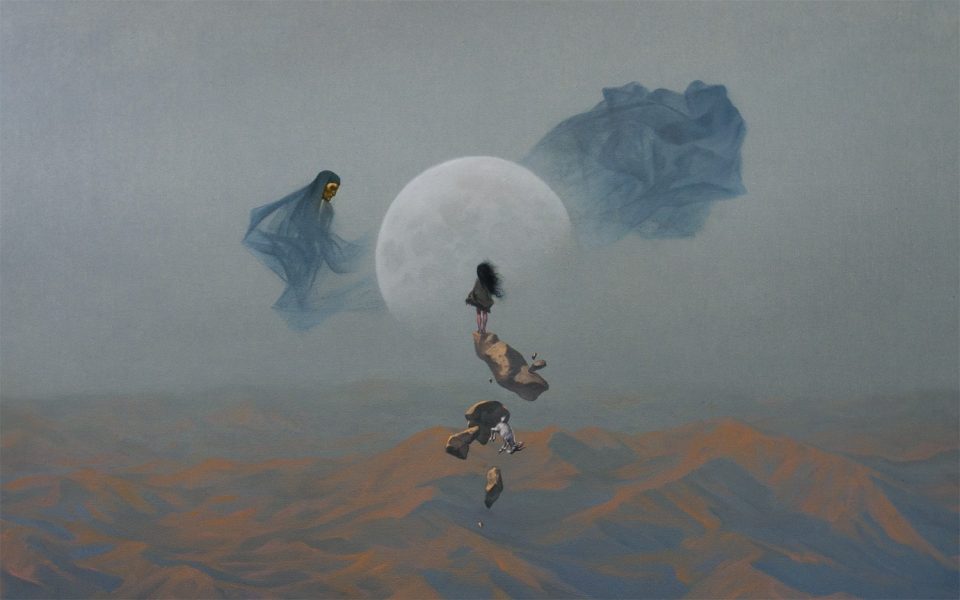
The Wizard archetype represents the eternal human fascination with magic, mystery, and the power to shape reality. Transcending cultures and historical eras, the Wizard embodies our desire to understand and harness the hidden forces of the universe [1]. This article explores the origins, characteristics, and significance of the Wizard archetype, tracing its evolution from ancient mythologies to modern times.
Explore all the Archetypes
The Wizard Archetype in Parts-Based Therapies
Parts-based therapies, such as Internal Family Systems (IFS), Schema Therapy, and Voice Dialogue, view the human psyche as composed of various parts or subpersonalities, each with its own unique characteristics, motivations, and coping mechanisms [25]. From this perspective, the Wizard archetype can be understood as a potential part within an individual’s internal system.
Internal Family Systems (IFS)
In IFS, the Wizard archetype may manifest as a magical, creative, and transformative part that helps the individual access their inner power and potential. This Wizard part can serve as a valuable resource for the individual, offering inspiration, innovation, and the ability to create change [26].
However, if the Wizard part becomes burdened or extreme, it may manifest as a grandiose or manipulative part that uses its power for personal gain or to control others. In IFS therapy, the goal would be to unburden the Wizard part and restore its natural, positive qualities.
Schema Therapy
In Schema Therapy, the Wizard archetype may be associated with the “Magical Child” mode, which represents a sense of wonder, creativity, and the belief in endless possibilities. The Magical Child mode embodies the Wizard’s ability to imagine and manifest change [27].
However, if an individual has experienced trauma or adversity related to the Wizard archetype, they may develop maladaptive schemas such as “Entitlement” or “Insufficient Self-Control,” which can lead to a misuse of power or a disconnection from reality. Schema Therapy aims to help individuals heal these maladaptive schemas and strengthen their Healthy Adult mode.
Voice Dialogue
In Voice Dialogue, the Wizard archetype may be viewed as a distinct subpersonality or “voice” within the individual’s psyche. This Wizard voice can be dialogued with to access creativity, innovation, and the ability to manifest change [28].
However, if the Wizard voice becomes dominant or imbalanced, it may lead to a neglect of other important voices, such as the practical or grounded voices. Voice Dialogue therapy aims to help individuals create a more balanced and harmonious inner system by facilitating communication and cooperation among the various voices.
Therapeutic Applications
By understanding the Wizard archetype from a parts-based perspective, therapists can help individuals:
- Identify and strengthen their inner Wizard part or voice, harnessing its creativity and transformative power for personal growth and manifestation.
- Recognize and work with any maladaptive or imbalanced manifestations of the Wizard archetype, such as grandiosity or manipulation.
- Integrate the Wizard archetype with other important parts or voices within their psyche, creating a more balanced and harmonious inner system.
- Heal past wounds or traumas related to the Wizard archetype, allowing for a more authentic and empowered expression of magic and creativity.
The Wizard’s Role in the Hero’s Journey
In Joseph Campbell’s monomyth, the Hero’s Journey, the Wizard archetype plays a crucial role as a catalyst for transformation, initiating the hero into the mysteries of the universe. The Wizard helps the hero transcend the limitations of the ordinary world and access the realm of magic and possibility [2].
On a symbolic level, the Wizard represents the hero’s journey towards self-mastery and the realization of their full potential. The Wizard embodies the psychological processes of transformation, initiation, and the awakening of hidden powers. By seeking out and learning from the Wizard, the hero undergoes a metamorphosis that enables them to fulfill their destiny.
The Wizard archetype also represents the qualities of magic, mystery, and the ability to shape reality. In the Hero’s Journey, the Wizard often serves as a bridge between the mundane and the extraordinary, revealing the hidden potential within the hero and the world around them. The Wizard’s magic and knowledge enable the hero to overcome seemingly impossible odds and achieve their quest.
Emotionally, the Wizard represents a sense of wonder, awe, and the belief in the impossible. By embodying the Wizard’s qualities, the hero learns to transcend their limitations, embrace their creativity, and tap into the power of the universe. The Wizard’s presence in the Hero’s Journey serves as a reminder that magic and transformation are possible, even in the darkest of times.
The Role of the Wizard in Prehistory and Ancient History
In prehistoric times, the Wizard served as a shaman, medicine man or woman, and master of the occult arts, wielding power and influence over their community [3]. The Wizard played a crucial role in the evolution of human consciousness by helping to bridge the gap between the physical and spiritual worlds, facilitating healing, and guiding their people through the mysteries of existence.
In ancient civilizations, the Wizard archetype took on various forms, from mythological figures to priests and magicians.
The Wizard in Mythology
- Greek mythology: Circe and Medea as powerful sorceresses [4]
- Norse mythology: Odin as the god of wisdom, magic, and prophecy [5]
- Celtic mythology: Merlin as the legendary wizard and advisor to King Arthur [6]
The Wizard in World Religions
The Wizard archetype is deeply embedded in the world’s major religions, often in the form of miracle workers, mystics, and those who wield divine power.
Christianity
- Moses as a prophet and miracle worker who parts the Red Sea and communicates with God [7]
- Jesus Christ as a healer and miracle worker who transforms water into wine and raises the dead [8]
Buddhism
- The Buddha as a master of spiritual powers and a teacher of the path to enlightenment [9]
- Tantric Buddhist masters using ritual and meditation to harness the power of the mind and transform reality [10]
Hinduism
- Vedic priests mastering the power of mantras and sacrificial rituals to influence the gods and shape reality [11]
- Yogis and sadhus attaining siddhis, or supernatural powers, through spiritual practice and austerities [12]
The Wizard in Literature and Art
The Wizard archetype has been a constant presence in literature and art throughout history, from ancient myths and legends to modern-day fantasy and science fiction [13]. Examples include:
- Prospero in Shakespeare’s The Tempest
- Gandalf in J.R.R. Tolkien’s The Lord of the Rings
- Dumbledore in J.K. Rowling’s Harry Potter series
Visual art has also depicted the Wizard archetype, symbolizing magic, mystery, and the mastery of occult forces through wands, staffs, and other magical objects [14].
The Wizard in Psychology and Personal Development
Carl Jung considered the Wizard one of the fundamental archetypes within the collective unconscious, representing the pursuit of power, transformation, and the realization of hidden potential [15]. The Wizard archetype encourages individuals to embrace their creativity, intuition, and the ability to shape their own reality [16].
According to Anthony Stevens in “Archetypes: A Natural History of the Self,” the Wizard archetype is associated with the psychic functions of intuition and sensation. The Wizard’s drive for power and transformation stems from a deep-seated need to understand and harness the forces of the universe [24].
The Shadow Side of the Wizard
While the Wizard archetype is generally associated with positive qualities, it also has a shadow side that must be acknowledged. The shadow Wizard can manifest as manipulation, control, and the misuse of power for personal gain [17].
Integrating the Wizard Archetype
To harness the positive potential of the Wizard archetype while avoiding its shadow aspects, individuals must strive for a balanced and integrated approach to power and transformation. This involves cultivating wisdom, compassion, and the responsible use of one’s abilities [18].
The Wizard in Relationships, Careers, and Life
The Wizard archetype can manifest in various aspects of life, influencing our relationships, careers, and personal development.
Relationships
In relationships, the Wizard may take on the role of a catalyst for growth and transformation, encouraging their partner to embrace their full potential. However, the Wizard must be mindful not to use their power to control or manipulate their partner.
Careers
Individuals with a strong Wizard archetype may be drawn to careers in the arts, entertainment, technology, or spiritual fields. They thrive in environments that allow them to express their creativity, innovation, and ability to create change.
Interpersonal Neurobiology and Somatic Experience
The Wizard archetype may inform our somatic experience by influencing the emotions we overidentify with or avoid feeling. For example, a Wizard-oriented individual may overidentify with feelings of power and control while avoiding emotions that challenge their sense of mastery and invincibility.
The Wizard’s Emotional and Somatic Expression
The Wizard archetype can manifest emotionally as a sense of wonder, awe, and the belief in endless possibilities. On the other hand, when the Wizard is out of balance, it may lead to feelings of grandiosity, entitlement, or a disconnection from reality.
Somatically, the Wizard archetype may be experienced as a sense of energy, vitality, and the ability to manifest change in the physical world. When the Wizard is suppressed or neglected, individuals may feel powerless, stuck, or disconnected from their creative potential.
Trauma and the Wizard Archetype
Trauma related to the Wizard archetype can manifest in two primary ways: enmeshment and avoidance. Enmeshment with the Wizard archetype may lead to an over-identification with power and control, neglecting the importance of humility and compassion. This can result in a misuse of one’s abilities and a lack of empathy for others.
Avoidance of the Wizard archetype may stem from experiences of powerlessness or the fear of one’s own potential. This can lead to a suppression of creativity, intuition, and the ability to create change in one’s life.
The Wizard in Politics and Religion
In politics, the Wizard archetype can manifest as charismatic leaders who use their power and influence to create social change. However, when the shadow aspects of the Wizard emerge, political figures may become manipulative, corrupt, or use their power to oppress others.
In religion, the Wizard archetype often takes the form of mystics, miracle workers, or those who claim to wield divine power. The Wizard’s ability to bridge the gap between the physical and spiritual worlds can facilitate a deeper connection to the divine and the experience of transcendence. However, when the shadow Wizard is present, religious leaders may use their power to control and exploit their followers or claim exclusive access to the divine.
The Balanced Wizard: Benefits and Opportunities
When the Wizard archetype is balanced and integrated, it can bring numerous benefits to an individual’s life. A balanced Wizard is creative, innovative, and able to manifest positive change in the world. They use their power and influence responsibly, guided by wisdom and compassion.
Embracing the balanced Wizard can lead to a greater sense of purpose, fulfilling relationships, and a career that allows for the full expression of one’s creativity and potential. By tapping into the Wizard’s magic and sharing it with others, individuals can contribute to the transformation and evolution of their communities and the world at large.
The Wizard in the Modern World
In today’s rapidly changing and complex world, the Wizard archetype is more relevant than ever. The modern Wizard must navigate the challenges of technological disruption, social transformation, and the ethical implications of wielding power and influence [19].
The Digital Age
- Tech innovators and visionaries using their skills to create new realities and shape the future [20]
- The rise of virtual and augmented reality as new frontiers for the Wizard’s magic [21]
Globalization and Social Change
- Activists and change-makers using their power and influence to create a more just and equitable world [22]
- The role of the Wizard in facilitating cross-cultural understanding and global cooperation [23]
Timeline of the Wizard Archetype’s Development
The Wizard archetype has evolved throughout human history, adapting to the needs and challenges of each era. Here is a timeline of its development:
- Prehistoric times: Shamans and medicine men/women wielding magic and influence over their communities
- Ancient civilizations: Emergence of mythological Wizard figures and magical practitioners
- World religions: Mystics, miracle workers, and those wielding divine power
- Middle Ages: Alchemists, astrologers, and occult practitioners seeking to unravel the mysteries of the universe
- Renaissance: The rise of ceremonial magic and the pursuit of esoteric knowledge
- Enlightenment: The Wizard archetype’s influence on the development of science and technology
- Modern era: Innovators, visionaries, and change-makers harnessing the power of the Wizard in the digital age
The Wizard Archetype’s Role in the Evolution of Human Consciousness
Throughout history, the Wizard archetype has played a crucial role in the evolution of human consciousness. By bridging the gap between the physical and spiritual worlds, Wizards have helped humanity transcend the limitations of ordinary reality and access the realm of magic and possibility.
For example, in ancient times, shamans used their magic and knowledge of the spirit world to facilitate healing, guide their communities, and maintain balance between the human and natural worlds. This allowed for the expansion of human consciousness beyond the confines of the physical realm.
In modern times, Wizards continue to push the boundaries of what is possible, using their creativity, innovation, and mastery of technology to shape the future and create new realities. They serve as catalysts for social change, inspiring others to believe in the impossible and work towards a better world.
The Wizard Archetype in Posture and Somatic Experience
The Wizard archetype can manifest in an individual’s posture and somatic experience. Those strongly identified with the Wizard may exhibit a confident, charismatic presence that draws others in and commands attention. They may carry themselves with a sense of power and authority, reflecting their belief in their ability to shape reality.
However, when the Wizard archetype is out of balance or suppressed, it can contribute to somatic issues such as tension and rigidity. For example, individuals who overemphasize control and mastery may experience chronic muscle tension, headaches, or digestive problems due to the constant stress of trying to maintain power and influence. Neglecting the importance of rest, relaxation, and surrender can exacerbate these issues.
Additionally, those who have experienced trauma related to the Wizard archetype, such as the loss of power or the fear of their own potential, may develop somatic symptoms as a way of expressing their unresolved emotional pain. This can manifest as chronic fatigue, anxiety, or a sense of disconnection from their body and physical reality.
To promote physical well-being and alleviate somatic issues related to the Wizard archetype, individuals can engage in practices that cultivate a sense of flow, ease, and surrender. This may include yoga, dance, martial arts, or other embodied practices that allow for the release of tension and the expression of creative energy.
Enneagram and MBTI Correlations with the Wizard Archetype
The Wizard archetype shares some characteristics with certain Enneagram and Myers-Briggs Type Indicator (MBTI) personality types.
Enneagram:
- Type 3 (The Achiever): The Wizard archetype resonates with the Type 3’s drive for success, influence, and the ability to create change in the world. Both are motivated by a desire to make a significant impact and leave a lasting legacy.
- Type 7 (The Enthusiast): The Wizard’s sense of wonder, possibility, and the pursuit of new experiences aligns with the Type 7’s adventurous and optimistic nature. Both are driven by a desire to explore the world and push the boundaries of what is possible.
MBTI:
- ENFJ (Extraverted, Intuitive, Feeling, Judging): The Wizard archetype shares the ENFJ’s charisma, vision, and ability to inspire and influence others. Both are driven by a desire to create positive change in the world and help others realize their full potential.
- ENTP (Extraverted, Intuitive, Thinking, Perceiving): The Wizard’s innovative thinking, adaptability, and ability to see possibilities where others see limitations align with the ENTP’s personality traits. Both are driven by a desire to explore new ideas, challenge the status quo, and create innovative solutions to complex problems.
It’s important to note that while these correlations can provide insight into the Wizard archetype, individuals of any Enneagram or MBTI type can embody the Wizard’s qualities or be influenced by this archetype.
The Wizard Archetype in Screenwriting and Fiction Plotting
In screenwriting and fiction plotting, the Wizard archetype often plays a crucial role as a catalyst for change, a mentor, or a powerful ally or adversary to the protagonist. The Wizard’s primary function is to introduce the element of magic, mystery, and the extraordinary into the story world.
Some common ways the Wizard archetype is used in storytelling include:
The Mentor
The Wizard acts as a mentor to the protagonist, initiating them into the ways of magic and guiding them on their journey. Examples include Dumbledore in Harry Potter, Gandalf in The Lord of the Rings, and Morpheus in The Matrix.
The Powerful Ally or Adversary
The Wizard serves as a powerful ally or adversary to the protagonist, using their magic and influence to either help or hinder the hero’s quest. Examples include Merlin in Arthurian legends, Saruman in The Lord of the Rings, and the White Witch in The Chronicles of Narnia.
The Initiator
The Wizard acts as an initiator, introducing the protagonist to the realm of magic and the extraordinary, and setting them on their path of transformation. Examples include the Wizard of Oz in The Wizard of Oz, and the Ancient One in Doctor Strange.
The Trickster
The Wizard archetype can manifest as a trickster, using their magic and wit to challenge the hero and reveal important truths. Examples include Puck in Shakespeare’s A Midsummer Night’s Dream, and Q in Star Trek: The Next Generation.
The Inner Wizard
The protagonist may discover their own inner Wizard, learning to harness their own magic and potential to overcome challenges and achieve their goals. Examples include Harry Potter in the Harry Potter series, and Neo in The Matrix.
The Power of the Wizard
The Wizard archetype represents a timeless and universal human fascination with magic, mystery, and the power to shape reality. By examining the Wizard archetype in its various manifestations and integrating its positive qualities, we can tap into our own creative potential and become catalysts for positive change in the world.
As we navigate the complexities of the modern era, the Wizard’s magic and innovation are more valuable than ever. By cultivating the Wizard within ourselves and recognizing its presence in others, we can harness the power of transformation, push the boundaries of what is possible, and create a more enchanted and purposeful world.
Bibliography
- Jung, C. G. (1969). The Archetypes and the Collective Unconscious. Princeton University Press.
- Campbell, J. (1949). The Hero with a Thousand Faces. New World Library.
- Eliade, M. (1964). Shamanism: Archaic Techniques of Ecstasy. Princeton University Press.
- Homer. (1999). The Odyssey. Translated by R. Fagles. Penguin Classics.
- Sturluson, S. (2005). The Prose Edda. Translated by J. L. Byock. Penguin Classics.
- Matthews, J. (2004). The Grail: Quest for the Eternal. Thames & Hudson.
- The Holy Bible, New International Version. (2011). Zondervan.
- Ehrman, B. D. (2014). How Jesus Became God: The Exaltation of a Jewish Preacher from Galilee. HarperOne.
- Armstrong, K. (2001). Buddha. Penguin Books.
- Yeshe, L. T. (1987). Introduction to Tantra: The Transformation of Desire. Wisdom Publications.
- Radhakrishnan, S. (1994). The Principal Upanishads. HarperCollins.
- Yogananda, P. (1946). Autobiography of a Yogi. Self-Realization Fellowship.
- Clute, J., & Grant, J. (1999). The Encyclopedia of Fantasy. St. Martin’s Press.
- Seligman, K. (1948). Magic, Supernaturalism, and Religion. Pantheon Books.
- Jung, C. G. (1968). Man and His Symbols. Dell Publishing.
- Maslow, A. H. (1968). Toward a Psychology of Being. Van Nostrand Reinhold.
- von Franz, M.-L. (1980). Alchemy: An Introduction to the Symbolism and the Psychology. Inner City Books.
- Wilber, K. (2000). Integral Psychology: Consciousness, Spirit, Psychology, Therapy. Shambhala Publications.
- Harari, Y. N. (2014). Sapiens: A Brief History of Humankind. Harper.
- Kurzweil, R. (2005). The Singularity is Near: When Humans Transcend Biology. Viking.
- Lanier, J. (2017). Dawn of the New Everything: Encounters with Reality and Virtual Reality. Henry Holt and Co.
- Hawken, P. (2007). Blessed Unrest: How the Largest Movement in the World Came into Being and Why No One Saw It Coming. Viking.
- Rifkin, J. (2009). The Empathic Civilization: The Race to Global Consciousness in a World in Crisis. Jeremy P. Tarcher.
- Stevens, A. (1982). Archetypes: A Natural History of the Self. William Morrow.
- Van der Kolk, B. (2014). The Body Keeps the Score: Brain, Mind, and Body in the Healing of Trauma. Viking.
- Schwartz, R. C. (1995). Internal Family Systems Therapy. Guilford Press.
- Young, J. E., Klosko, J. S., & Weishaar, M. E. (2003). Schema Therapy: A Practitioner’s Guide. Guilford Press.
- Stone, H., & Stone, S. (1989). Embracing Our Selves: The Voice Dialogue Manual. New World Library.


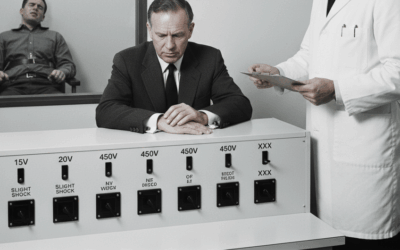
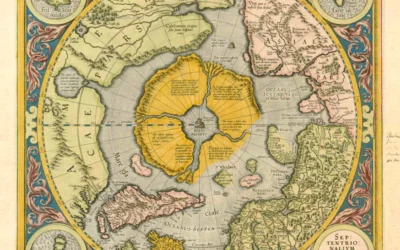
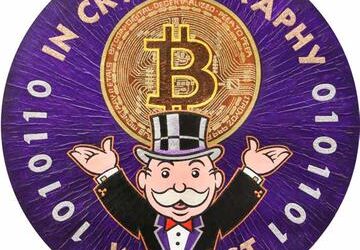



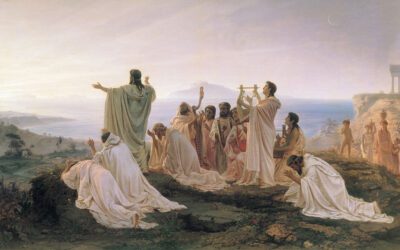
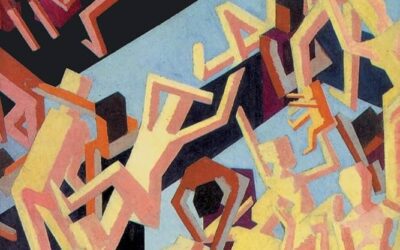
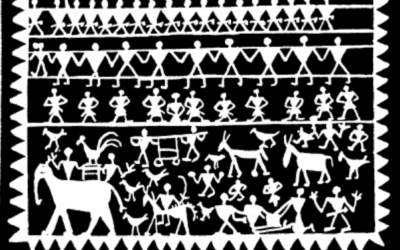

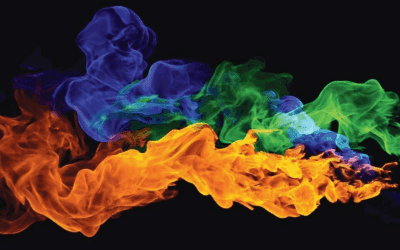








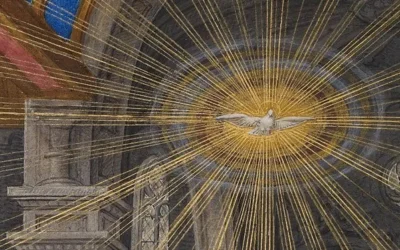




0 Comments